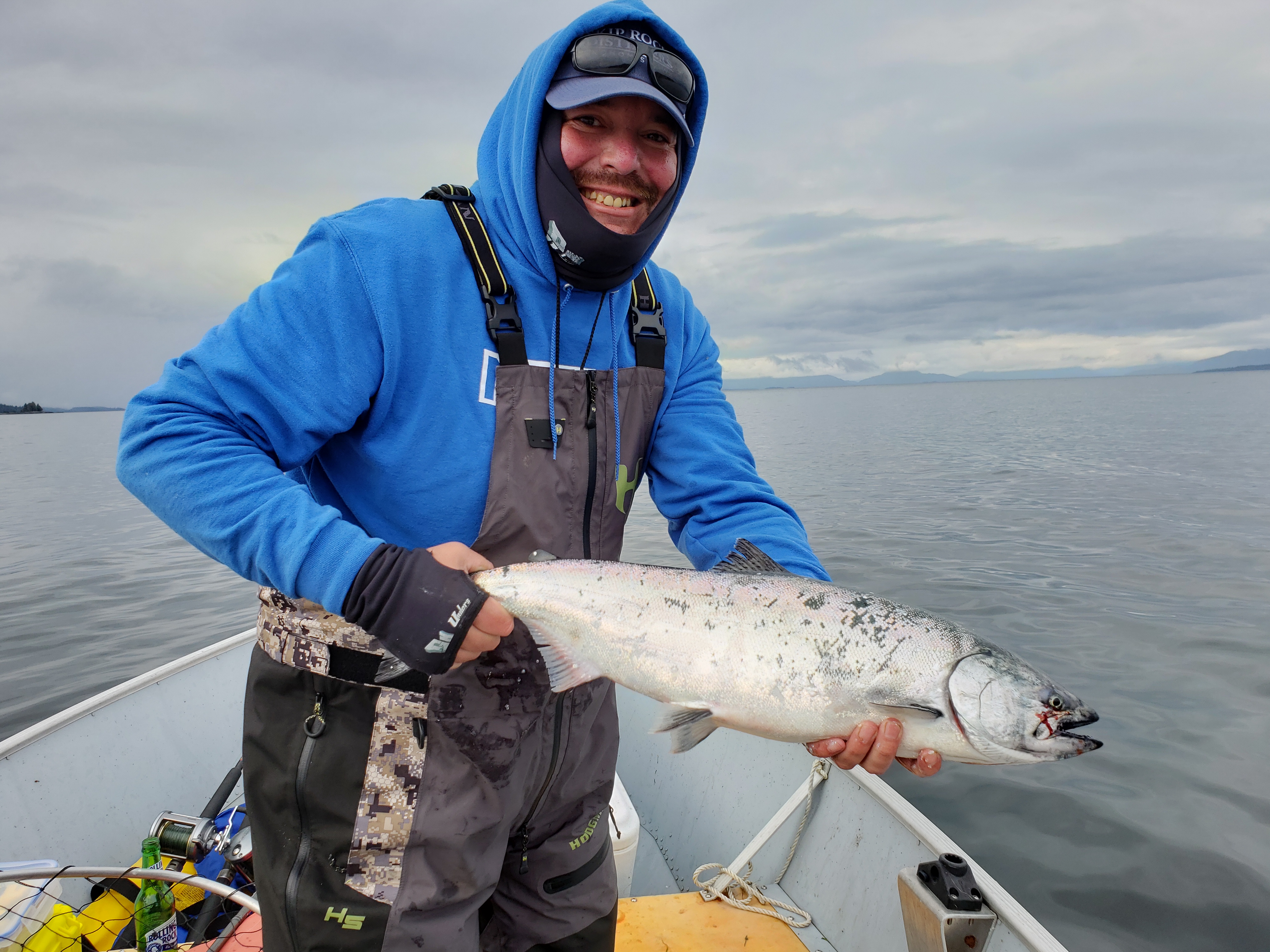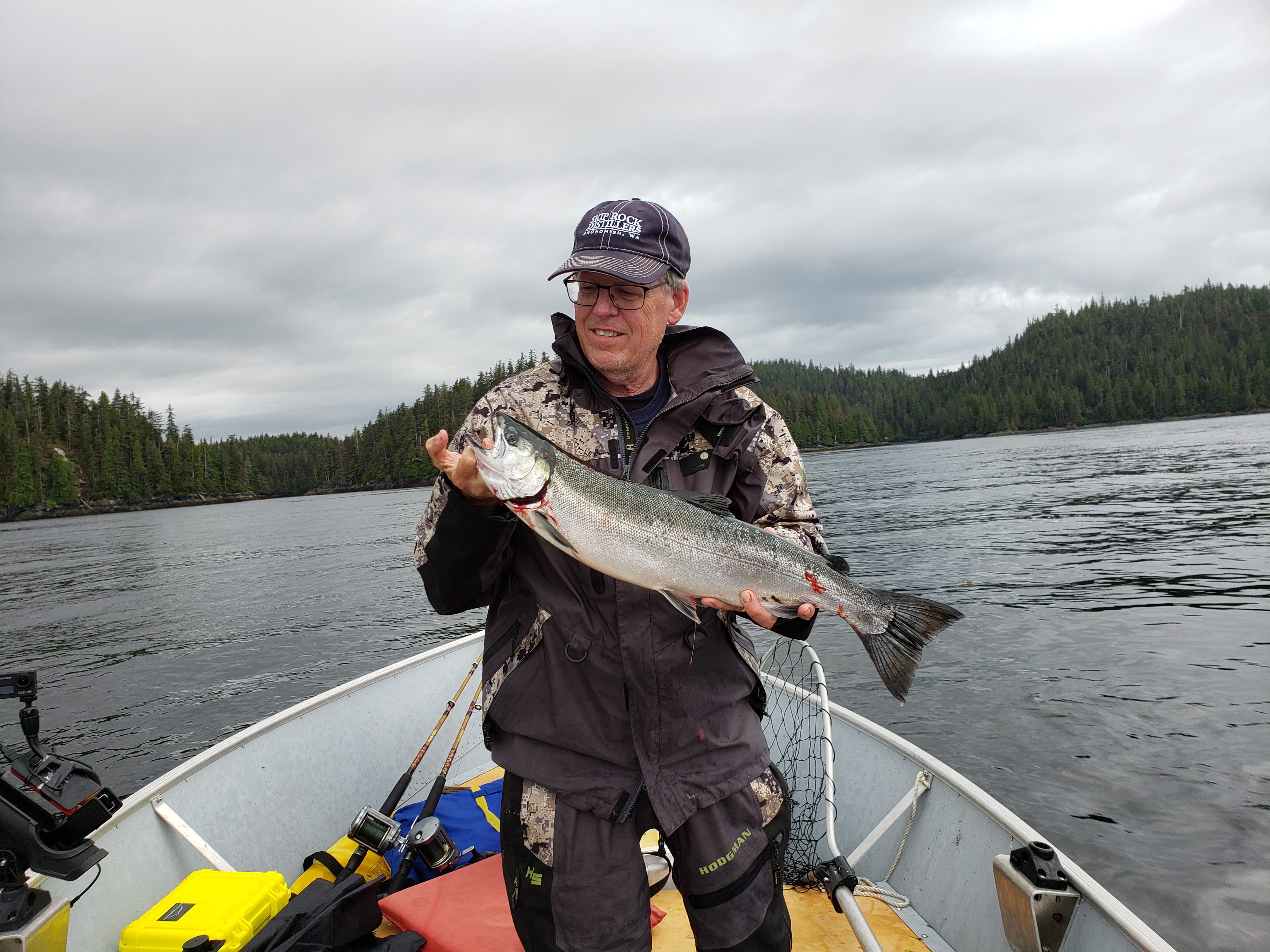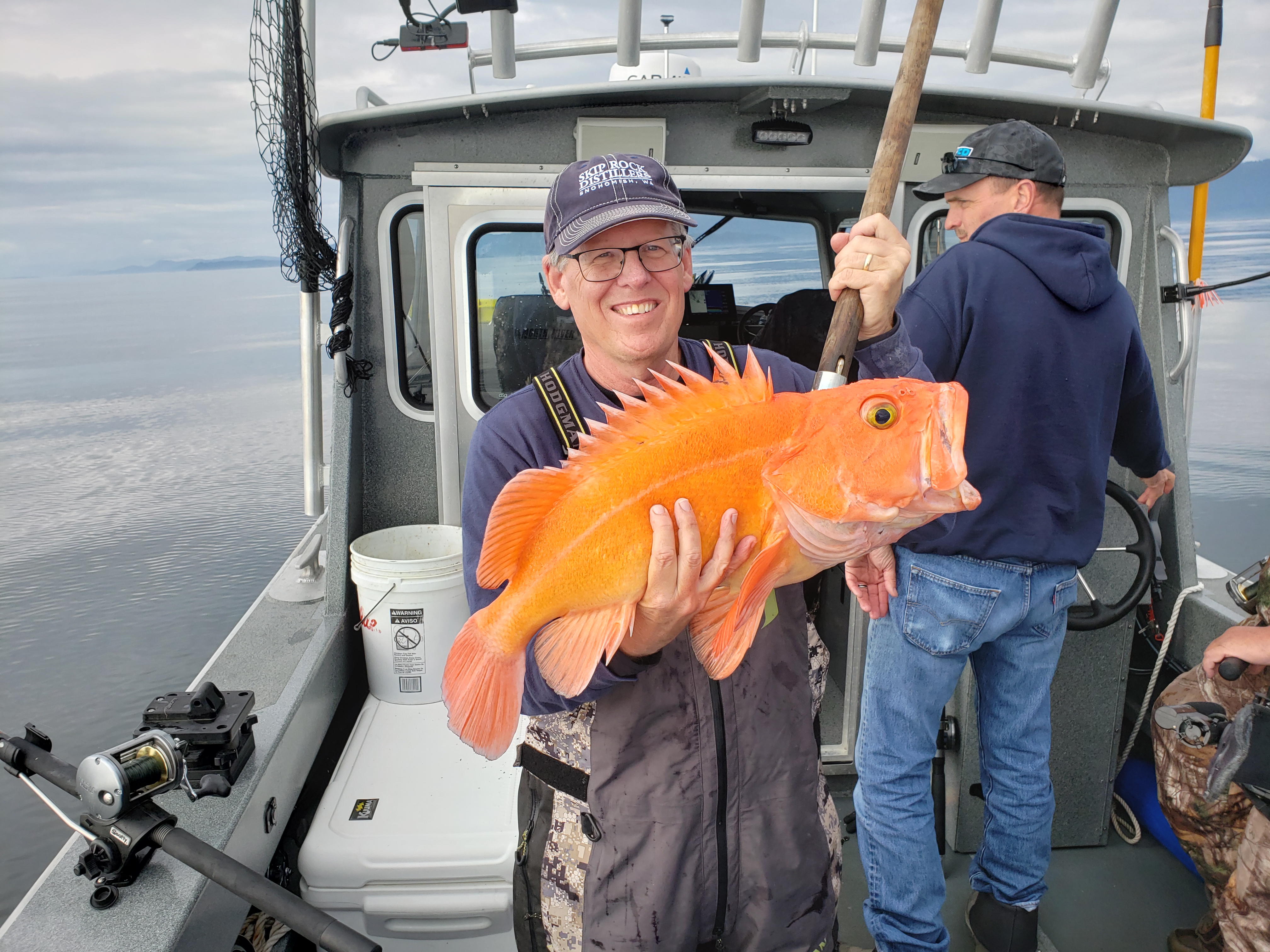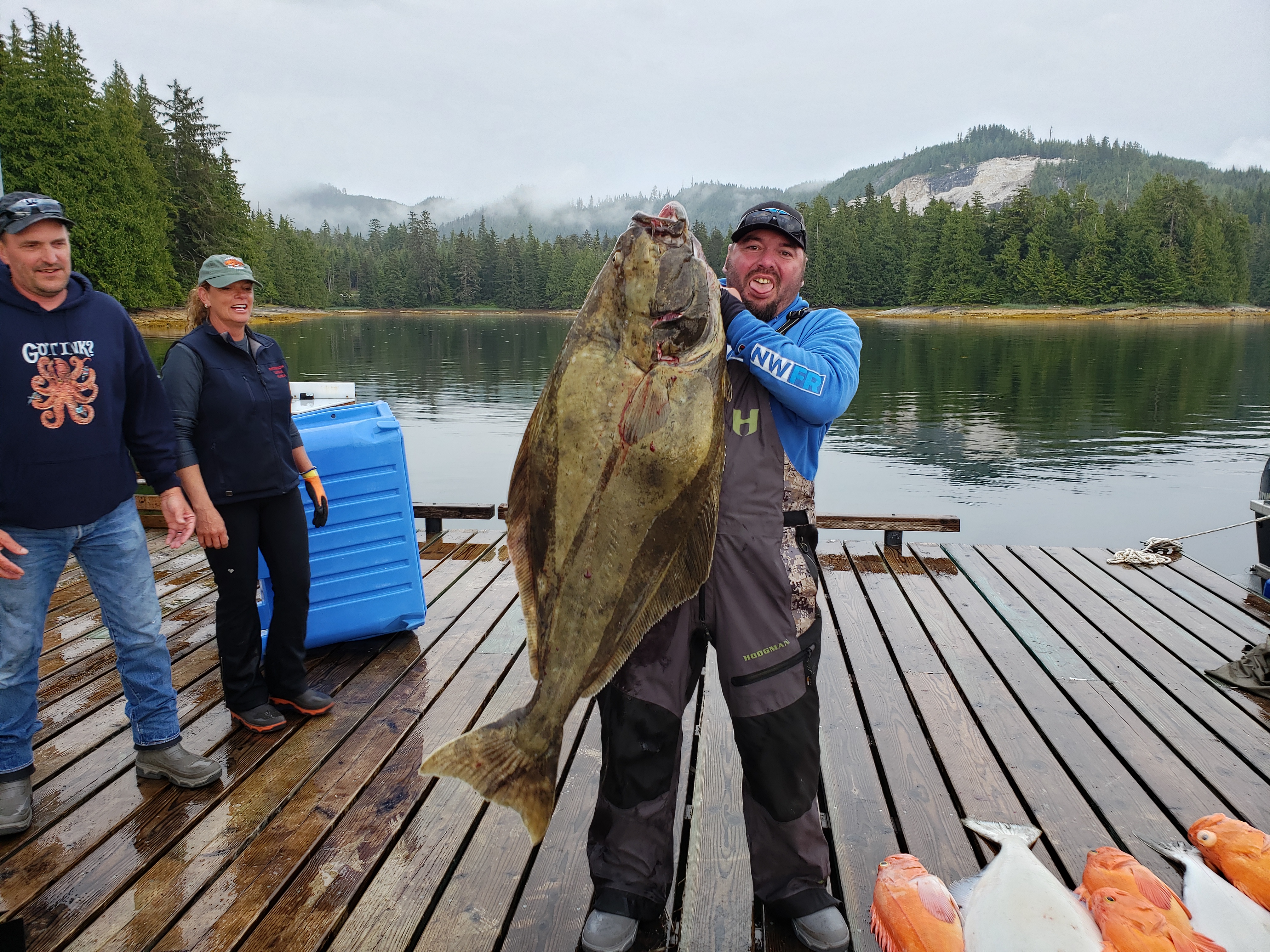Search
Latest Articles
Thorne Bay Alaskan Adventure!
by Mike Carey, August 05, 2019
Gathering our luggage, our group of four anglers (Rob, Paul, Bruce, and I) exited out the door marked “Float Planes” and down to the dock. It was a quick ride across the bay from the airport to the Taquan Float plane company where we loaded up and our pilot, Glenn, lifted us off the water and to our destination. This was a trip of firsts – it was my first float plane ride. The plane glided gently over the waters of Ketchikan, revealing a steady view of pine-cover hills and rocky shoreline. Twenty five minutes later we smoothly touched down on the water and taxied to our destination’s dock, Anderson Lodge on Thorne Bay.
“Welcome to Anderson Lodge Alaska!” Greeting us at the dock were Gary and Victoria Anderson, owners of the Lodge. A gentle rain came down while we unloaded our gear for the short drive to the lodge. As we took in the small town of Thorne Bay Gary gave us an overview of the coming five days. There would be a variety of fishing, crabbing, and shrimping adventures during our stay. One of the unique opportunities at Anderson Lodge Alaska is the ability for anglers to take both chartered trips with Gary and Victoria and self-guided trips in the skiffs provided by the Lodge (all gear and tackle included). The sheltered inner waters of Thorne Bay make this possible.
When we arrived at the Lodge we purchased our fishing licenses. Gary and Victoria are in the process of doing renovations to the Lodge, including a huge outdoor deck which will have a sweeping view of the marina and surrounding waters. Meanwhile, our rooms awaited us. Spacious, with two double mattresses, a full kitchen, and mini-frig, the rooms are perfect for extended stays. Coffee maker and coffee of course is included! In case you were wondering about meals, Anderson Lodge Alaska provides meal plans as part of the packages. You have a variety of options to choose from.
Our first couple of days we decided to do the self-guided fishing trips. We got up to leave at a leisurely 7am fishing time. Walking down to the dock (all of 20 yards from the room) we checked out our fishing machines for the trip. We were impressed to find a 15 foot Lund boat with 25 HP Yamaha, Garmin GPS/fishfinder, Scotty electric downrigger, a tackle box stocked with essential salmon and bottom-fishing gear, appropriate rods with Shimano reels, herring, large cooler, and crab pots. Everything we would need to get the job done for salmon, halibut, and bottom fish. Regarding tackle, I will say that in retrospect next time I’ll bring some of my favorite lures and jigs that I like to use. More than once I found myself thinking during our fishing days that I wished I had a particular lure to use. There is a tackle store at the lodge though and it’s pretty well stocked with some quality gear if you want something that isn’t provided with the boat.
After reviewing charts and locations with lodge owner Gary Anderson, we set off for a day of fishing. But before the fishing we dropped off our crab pots in the bay. Crab pots are provided as part of the self-guided adventures. I found out during our stay that unlike Puget Sound, you aren’t going to be pulling up a pot with a dozen crabs in it. What you will be pulling up, however, are some large, quality crabs with a 50-50 mix of males to females. The minimum size is 6 ½ inches and most all the crab we got exceeded that by at least a quarter inch.
The run from the lodge to main section of Thorne Bay only takes around ten minutes. As we pulled out into the bay the majesty of Alaska revealed itself once more. Across the bay was the Inner Passage, with tree-covered hills and islands as far as the eye could see. During the day in the distance we would see cruise boats making their way up and down the passage. Throughout the day pods of killer whales surfaced and played around us.
The bay itself is fairly calm and the lunds were quite comfortable to fish out of. We decided to start the day trolling for salmon. Gary reported that the prior week a 30 pound king had been taken, and the coho and pinks were beginning to show up in increasing numbers. Alaska had been in the grip of a warm, dry spell prior to our arrival which had slowed the return of the coho to the bay prior to their run up the Thorne River.
We rigged up with a magnum flasher and green hoochie on one side, with a whole herring attached, and a Dutch Fork Custom spinner blade and beads on the starboard rod, with an eight ounce weight and 40-50 pulls back. Our trolling speed we kept at around 3 mph since we were trying to target the silvers that Gary reported had begun to show up. We knew they were out there as Gary had taken use up the Thorne River just the other day and I had caught a chrome bright six pound coho.
It didn’t take long before the downrigger rod violently loaded and released, drag screaming and line peeling. I grabbed the rod and battled in a beautiful 26” chinook which was safely released. So began three days of adventures on Thorne Bay as we traveled out to protected bays and points, searching out chinook, silvers, and coho. The first day we couldn’t keep the chinook off our lines, unfortunately they all ran just shy of the 28” minimum size required to keep a chinook. Along the way we started filling coolers with bright silvers and pink salmon. With rain coming and going, by the third day the bay, and specifically Tolstoy Point, began filling up with ever greater numbers of pinks and coho. The local chinook, meanwhile, dispersed from the first day when we easily caught and released around twenty chinook. The coho and pinks were chrome bright, aggressive and battled hard. It was not unusual to be letting out lines and suddenly have a fish smash the lure before even getting a chance to put the rod in the rod holder.
Thorne Bay is on the Inner Passage of Alaska, and because of this the water conditions were much more comfortable than what I had been expecting. Fishing the west side of Vancouver Island or off shore in the Straits of Juan De Fuca it’s not unusual to be dealing with big waves and rollers. The Inner Passage, however, was quite calm and comfortable to fish on. This afforded us the opportunity to search out halibut in the Bay. Halis can be found in waters of 100-250 feet deep, easy jigging depths, and can reach well over one hundred pounds. We didn’t have any success and it was hard to not fish for the salmon in the Bay. “I have a plan to get you guys on some big halibut”, Gary informed us. “The west side of the island has some amazing halibut holes and it’s not unexpected to catch fish in excess of a hundred pounds. It’s an hour and a half drive to the launches on that side of Prince of Whales Island. I’ll take you there tomorrow and we’ll load up on halibut.”
The next morning we left Thorne Bay at a leisurely 6am and by 8:30 we were on the water to the first of many halibut locations that Gary and his wife Victoria would show us.
As we pulled into our first drift I took in the marvels of Alaska. In the distance a whale breached, and closer by otters lazily watched us go by as they floated on their backs. The mountains of the surrounding shores seemed to stretch to the ends of the horizon. This was truly Alaska at its most remote. Not a single boat was around us as we began fishing.
My experience with halibut fishing is for the most part to anchor up and lay out a scent trail, and wait for the halibut to come to us. It can be an effective method, but it’s not the way that Gary targets these big halibut. Instead, Gary and Victoria had us “run and gun”, from one fishy looking hole to another. With the huge area of water we were fishing this made good sense as looking at Gary’s GPS map there seemed to be no end to good spots to drop a jig down to.
We used 12 ounce jigs, tipped with herring chunks and octopus. Lowering our offering down to 200-250 feet holes, were made contact with the bottom and cranked up three turns on our reels, then gently jigged. Periodically we would drop the jig back to the bottom to re-establish that we were in the fish zone. It wasn’t too long before we began bringing up large quillback rockfish, much larger than anything Washington has to offer. We released these fish with deep water release devices to protect the resource, as they were what we were looking for. Gary moved us from spot to spot until at the start of a new drift my rod doubled over and violently downward. I reared back and set the hook into my first ever Alaska halibut!
My fish came up somewhat easily, and I thought it wasn’t too big a fish after all. Suddenly as the fish was almost in sight of the boat it took a screaming run, line peeling off my reel at a frantic pace. Gary laughed, “They’ll do that when they see the boat, looks like that fish is bigger than you thought it was.” Indeed, as I reeled it back closer to the boat the fish was obviously a good one. “Let’s get the harpoon in to that guy”, Gary said. Gary expertly thrusted downward and the halibut shuttered violently as the point found its mark. Firmly secured, Gary reached over and bled my fish. After a few minutes the hali was calm enough to gaff and pull into the boat. “That’s a nice fish, but there are bigger ones to be had.” Gary said. Not long after, Rob set the hook to a true Alaska monster and had himself an epic battle, culminating in another harpooning by Gary. This time we learned just why halibut of this size should be harpooned. The fish reacted with a tremendous run, ripping out Rob’s hook and sucking the large float attached the harpoon tip under the water. After bleeding the fish Gary and Victoria hoisted the 90 pound halibut into their 27 foot North River boat.
What a fish! Rob let out a whoop and we all “Hi-Fived”. This was Alaska fishing at its finest. We continued to fish into the afternoon, landing another nice halibut and boat limits of huge yelloweyes, which an angler is allowed to keep one per year in Alaska. After a smooth ride back to the launch and easy drive home we relaxed to a feast of seafood – crab, prawns, corn on the cob and potatoes, dumped family-style on to the table for all to share and enjoy.
The week’s stay went by much too quickly and as I look down from 30,000 feet at snow-capped Alaska mountains, I found myself recalling all the amazing sights I got to see. The beautiful remote wilderness of Alaska is something I hope you get to experience. More than a fishing trip, it is a destination that will heal and sooth your soul as you leave behind, for a brief time, the daily worries and anxieties of urban living, and find that slice of paradise, a short two hour plane ride away.
For more information on Thorne Bay and Anderson Lodge Alaska contact Gary and Victoria at 907-419-0957. Visit their Anderson Lodge Alaska web site and Facebook page to book your get away Alaska trip.




